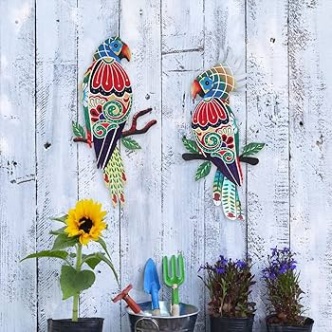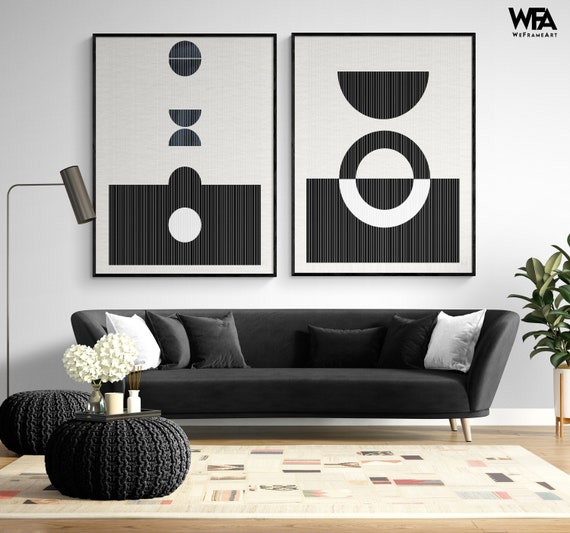Outdoor Wall Art: A Vibrant Expression of Creativity
What is Outdoor Wall Art?

Image Source: media-amazon.com
Outdoor wall art, often referred to as murals or street art, is a form of visual expression that adorns outdoor walls and surfaces. It ranges from simple graffiti tags to intricate, large-scale murals. This art form has evolved over centuries, from ancient cave paintings to modern-day masterpieces. It’s a powerful medium that can transform urban landscapes, spark conversations, and inspire communities.
The History of Outdoor Wall Art
The roots of outdoor wall art can be traced back to prehistoric times. Cave paintings, hieroglyphics, and other ancient forms of wall art showcased the artistic abilities and cultural beliefs of early civilizations. In more recent history, street art emerged as a countercultural movement, often expressing social and political messages. Graffiti artists, particularly in urban areas, used spray paint and markers to create their works, often defying authority and challenging societal norms.
Techniques Used in Outdoor Wall Art

Image Source: etsystatic.com
A variety of techniques are employed in creating outdoor wall art. Some of the most common techniques include:
Spray painting: This technique involves using aerosol cans to apply paint to a surface. It allows for quick and dynamic creations, as well as intricate details.
The Impact of Outdoor Wall Art on Communities

Image Source: etsystatic.com
Outdoor wall art can have a profound impact on communities. It can:
Beautify urban landscapes: By adding color and creativity to often drab and neglected areas, outdoor wall art can revitalize neighborhoods and enhance the overall aesthetic appeal of cities.
How to Create Your Own Outdoor Wall Art
If you’re interested in creating your own outdoor wall art, here are a few tips:
1. Choose a suitable location: Find a wall that is legally accessible and has good visibility.
2. Obtain necessary permissions: If you’re working on public property, obtain permission from the relevant authorities.
3. Plan your design: Sketch out your ideas and consider the overall composition, color palette, and message you want to convey.
4. Gather your materials: You’ll need spray paint, brushes, rollers, and other supplies, depending on your chosen techniques.
5. Start with a base coat: Apply a base coat of paint to the wall to create a clean and uniform surface.
6. Create your design: Use stencils, freehand drawing, or projection techniques to bring your design to life.
7. Add details and highlights: Use smaller brushes and finer details to add depth and dimension to your mural.
8. Step back and assess: Take a break and evaluate your work from a distance to identify any areas that need improvement.
9. Finish with a clear coat: Apply a clear coat to protect your mural from the elements.
The Future of Outdoor Wall Art
The future of outdoor wall art is bright. As cities continue to urbanize, there will be increasing opportunities for artists to create stunning murals and installations. With the rise of digital technology, we can expect to see even more innovative and immersive forms of public art. As long as there are walls, there will be artists eager to adorn them with their creativity.
Conclusion
Outdoor wall art is a powerful and versatile form of expression that can transform urban landscapes and inspire communities. Whether you’re an artist, a community leader, or simply an admirer of public art, there’s no doubt that outdoor wall art has the potential to make a positive impact on our world.
FAQs
1. What is the difference between graffiti and street art?
While both terms are often used interchangeably, graffiti typically refers to unauthorized markings or tagging, while street art is often commissioned or sanctioned by authorities and aims to beautify public spaces.
2. How can I get involved in the street art scene?
You can connect with local artists, attend workshops, or participate in community mural projects.
3. What are the legal implications of creating outdoor wall art?
Always obtain necessary permissions before creating outdoor wall art on public or private property.
4. How can I protect my outdoor wall art from vandalism?
Use high-quality materials, apply a clear coat, and consider installing security cameras or other protective measures.
5. What are some famous examples of outdoor wall art?
Some famous examples include the works of Banksy, Jean-Michel Basquiat, and Shepard Fairey.
6. How can outdoor wall art promote social change?
By addressing social issues, raising awareness, and sparking conversations, outdoor wall art can inspire action and promote positive change.
7. What are the challenges faced by outdoor artists?
Outdoor artists often face legal challenges, vandalism, and weather-related damage.
outdoor wall art














